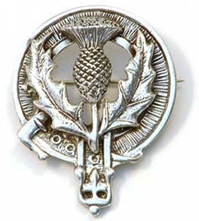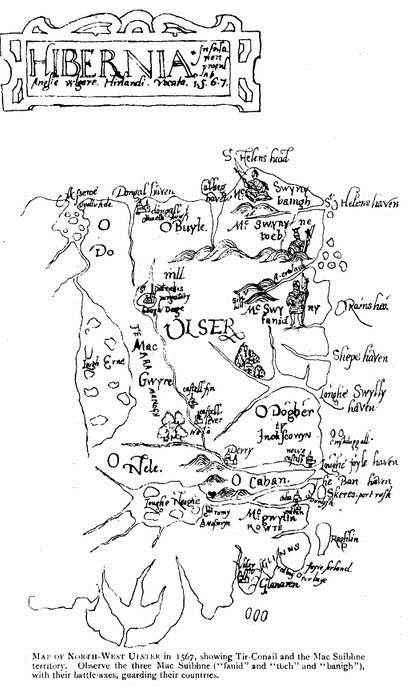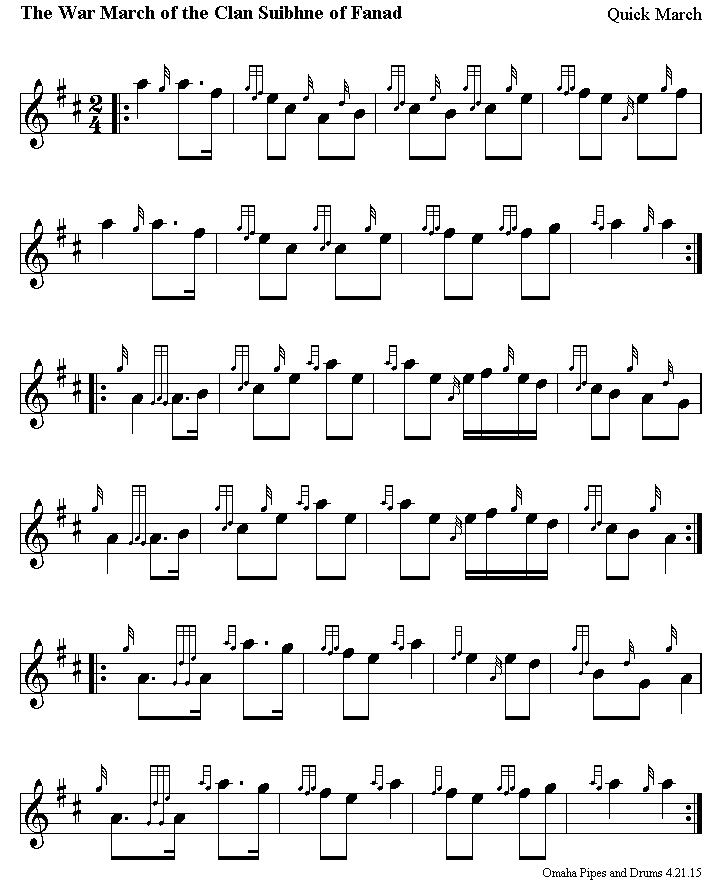
Best viewed in
Internet Explorer
Music (PDF)
Music (BMW)
Back to

Updated
05/12/2015 |
 |
The
War March of the Clan Suibhne of
Fanad
The Sweeneys, an
Irish sept of the race of Ua Naill, can trace their ancestry from King
Milesius of Spain through line of his son Heremon (King of Ireland;
1015-1028 BC). The sons of King Milesius were the legendary Celtic
invaders of Ireland that conquered the land around 1000 BC.
Suibhne (Sweeney)
is an old name, a very old name. In Irish it means
pleasant and is pronounced SWIvNEYa. There are many High Kings
associated with the history of the Sweeney name. There is Conn of the
Hundred Battles, the 110th High King of Ireland. He was the mythical
brother of Eogan, leader of the Gaelic tribes that settled in the
midlands, Western and Northern areas of Ireland.
After the battle
of Bannockburn there is no further mention of the Sweeney family in
Scottish history. The Sweeneys of Castle Sween had returned to Ireland,
where the senior branch went back to Rathmullan, almost in sight of the
ancient (c. 1700 BC) stone fort, the Grianan of Aileach, from which they
departed almost 200 years previously.
The Mac Suibhne
remained a powerful family in Scotland up until the 14th century. They
were forced from their territories around Argyll by Robert the Bruce’s
sweep across the nation as he attempted to become King of Scotland. The
Mac Suibhnes attempted to take back their land but lacked an army strong
enough to overpower Bruce. They were forced to leave for Ireland. |
They divided into
three branches: Mac Suibhne Fanad, Mac Suibhne na d'Tuatha and Mac
Suibhne Banagh. Fanad (official name: Fánaid) is a peninsula that lies
between Lough Swilly and Mulroy Bay on the north coast of County Donegal
in Ireland. The origins of the name Fanad are lost in time though there
is some speculation that the name derives from an old Gaelic word Fana
for "sloping ground". It is also referred to as Fannet, Fanid, or
Fannett in older records.
Rathmullan was the seat of the Mac
Sweeney Fanad for the next 400 years, during which time their influence
extended from Donegal into Connacht and Munster. In Donegal their
principle seats were Doe Castle and Rahan Castle near Killybegs.
All three of the Mac Suibhne clans were
victims of Oliver Cromwell’s invasion of Ireland in the 16th century.
They could not compete with the military strength of Cromwell and had
their land taken and given to British settlers.
The name Mac Suibhne evolved into the
more English sounding MacSweeney as the British integrated themselves
into Irish society. The name then changed further, dropping the ‘Mac’
prefix. People did this because it was difficult to find work if you had
an Irish sounding name. The more English sounding Sweeney would have
offered a better chance.
Thousands of Sweeneys left Ireland for
Britain, American and Australia during the ‘Great Famine’ in the
mid-19th century. It is now a popular name around the world.

|



